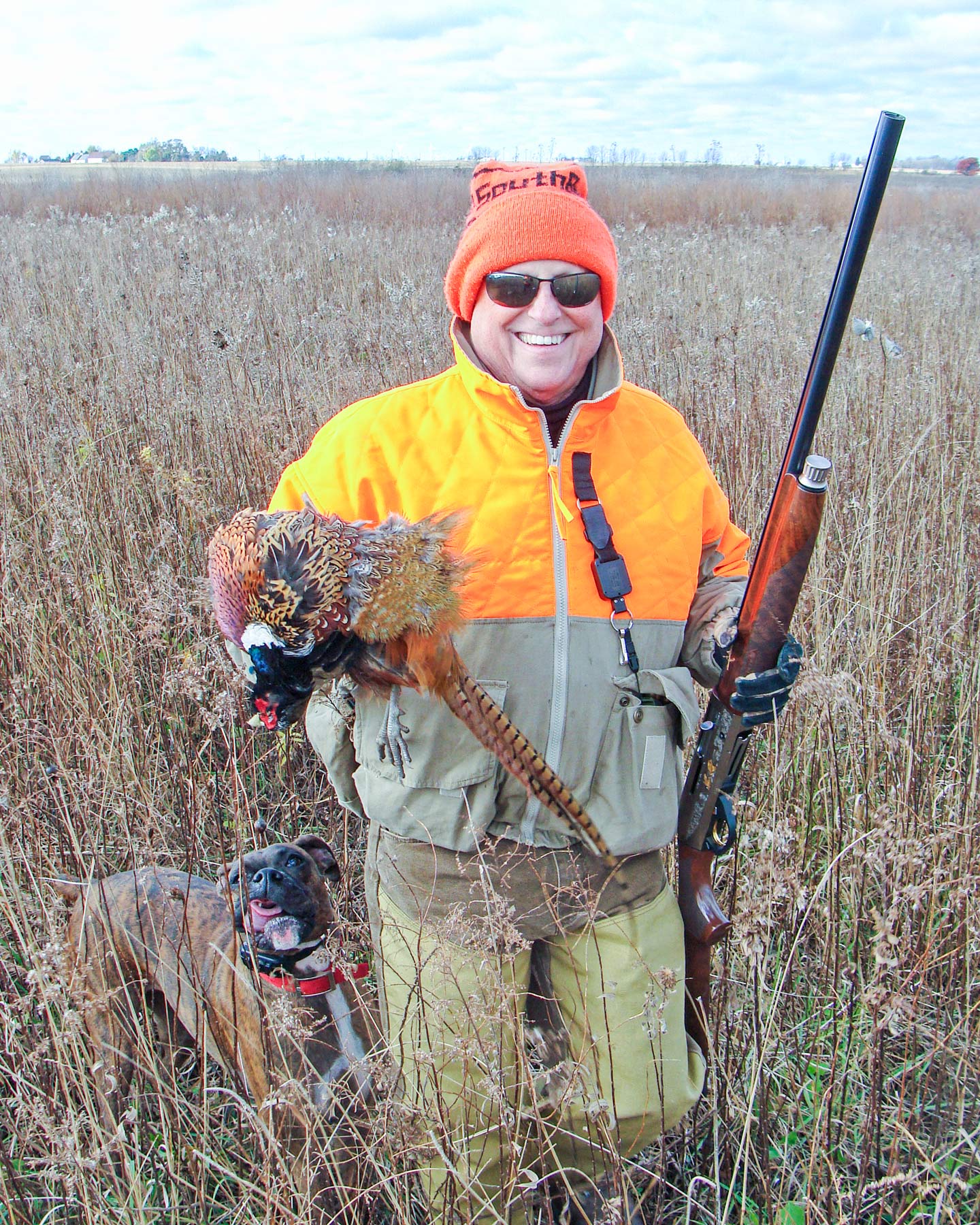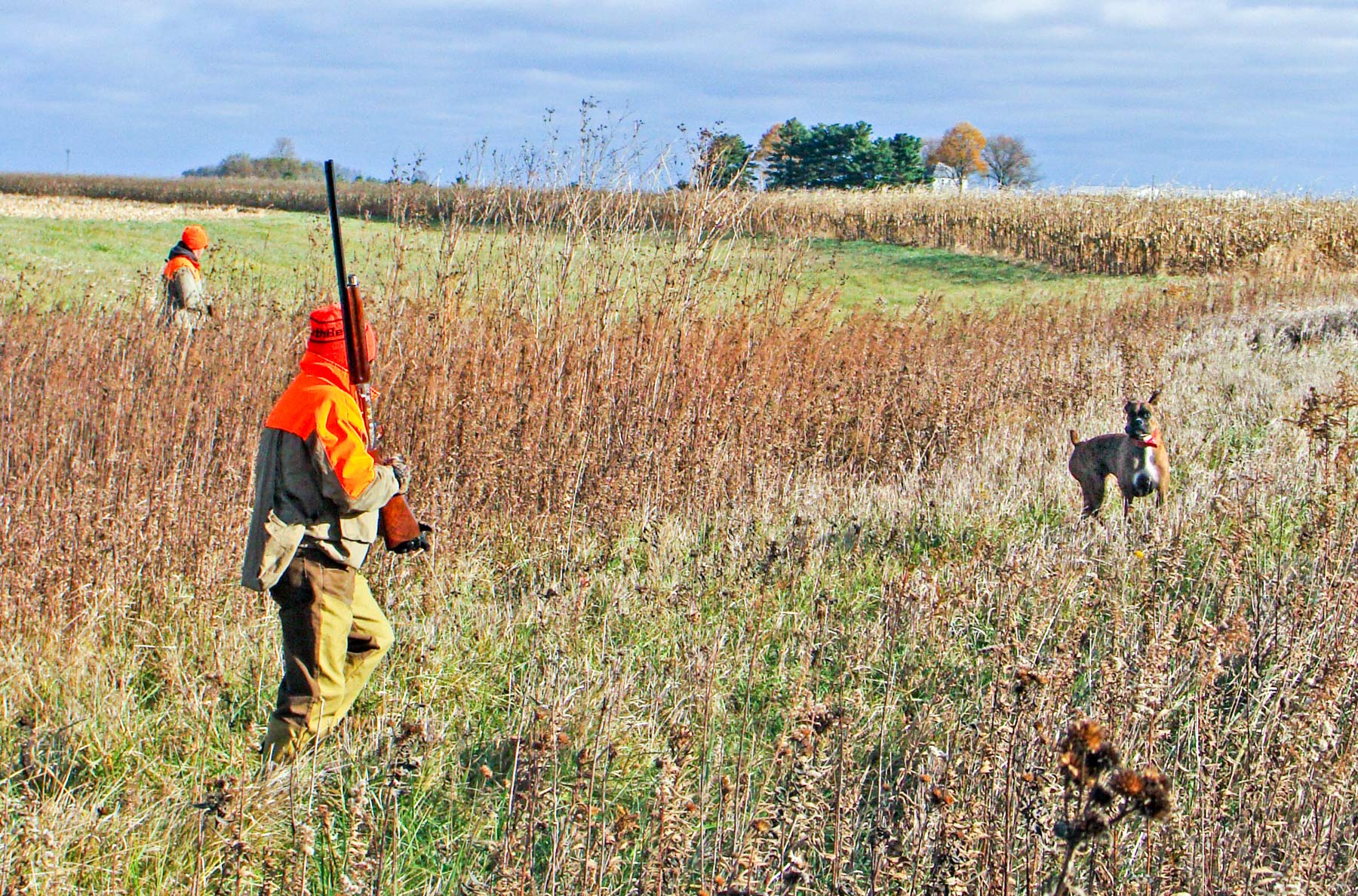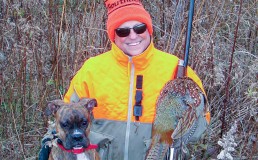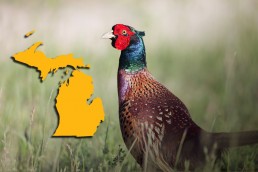The Silent Pheasant Hunter
SHARE THIS POST
News flash—pheasants are not stupid!
Okay, maybe this didn’t need to be a news flash. Maybe all pheasant hunters already know that pheasants are not stupid. On second thought, maybe we do need to remind hunters that pheasants are actually pretty smart, even though they have a very small brain. They need to be smart, tough, and very wary to survive very long in the wild.
After all, human hunters are not the only threats that pheasants face. Long before the fall hunting season starts, they must learn to avoid a multitude of predators. Foxes, coyotes, hawks and owls represent some of the biggest dangers once they are fully grown. But young pheasants and even pheasant eggs are also preyed upon by raccoons, skunks, opossums, snakes and other predators. Bad weather like flooding rains and winter snow and storms are another threat. Life in the wild for a pheasant is not easy.

Of course, once hunting season starts in November, pheasants need to be wary enough to avoid hunters as well. Wild pheasants must use their wits and their senses to stay alive. Happily, for them, they have exceptional sight and an excellent sense of hearing. Their eyesight is as good (or nearly as good) as that of wild turkeys, and we all know how well turkeys can see.
The hearing of wily ring-necked pheasants is also extremely good. It has been said that pheasants can hear as much as 10 times the sound range of humans. Combine that with the fact that sound seems to travel farther in colder temperatures, and it’s not surprising that pheasants can hear us coming from long distances. Any gamebird with excellent sight and hearing is going to be difficult to sneak up on, but that’s exactly what we as hunters are hoping to do.
There is not much we can do about the pheasant’s vision, but we can certainly do something to foil their sense of hearing, or at least minimize its effectiveness. It’s simple: Be quiet! The less noise you make, the better. Talk as little as possible and keep all other unnatural sounds to a minimum. In fact, don’t talk at all if you can help it. Human voices mean one thing to wild pheasants: danger.

Are you enjoying this post?
You can be among the first to get the latest info on where to go, what to use and how to use it!
Before you even get to the fields where you will be hunting, it’s a good idea to come up with some simple hand signals and share them with those who will be hunting with you. After all, if one of your hunting partners is 30 or 40 yards away, it may be difficult for them to hear you if you want to give them some instructions. Simple instructions that quickly come to mind are “stop,” “move ahead slowly,” “go left or right” and “slow down.” There are plenty of other signals that you can come up with.
Hand signals can be quite beneficial, especially if you are hunting in very windy conditions. Wind can make it difficult to hear someone who is not close at hand, and shouting defeats the purpose of being quiet! Besides the fact that strong winds can muffle your voice, the wind can also create plenty of background noise. Dry grasses and weeds make a rough, raspy sound in the wind as they rub against each other, and you don’t want to try to talk over it.
Speaking of wind, it is possible to use the wind to your benefit when walking stealthily through a pheasant field. Position yourself so that you can walk into the wind if possible. Sounds are carried on the wind, and if you are walking into the wind, the sounds will be carried away behind you rather than in front of you. The sound of the wind in the dry grass will also help to cover up some of the sounds of your footfalls as you move through the grass and brush.
If you are hunting with dogs (or a dog), try to use non-verbal cues with them as well. Remember, silence is golden. Dogs are very good at reading body language and understanding hand signals and other gestures. Of course, this training with the dog will have to be done far in advance of the hunt to be effective.

Dogs might even be better at understanding your hand signals than your human hunting partners! Since your dog will be working the field out in front of you, a visual hand signal might be easier for the dog to respond to than a muffled voice command. The less talking there is between you and your partners and the dogs, the better.
Once your dog knows what you want, they can help flush pheasants that try to run rather than fly. Surprisingly, pheasants can run up to 10 miles per hour. Smart birds often run through the grass and weeds ahead of groups of hunters, and if they never take to the air, the hunters are not likely to see them and shoot at them. Shrewd pheasants that try to run can be foiled by a quick dog that picks up their trail. A panicked pheasant being chased by a dog is much more likely to take to the sky. That’s when we get a shot at them!
Early December is a great time for a pheasant hunt. The Indiana pheasant season runs through December 15, so don’t wait too long. Brisk weather and beautiful birds make for a great day in the field. Just be sure to wear your hunter orange clothing and purchase your hunting license and game bird habitat stamp before heading out. The memories you make with family and friends will last a lifetime.
MWO
SHARE THIS POST
Did you enjoy this post?
You can be among the first to get the latest info on where to go, what to use and how to use it!
Tom Berg
A lifelong outdoorsman and award-winning outdoor writer and nature photographer, Tom Berg has been the Executive Director/Treasurer of the Hoosier Outdoor Writers group for the past 14 years. When he is not writing, he would rather be outside fishing, hunting or trapping than doing just about anything else.



